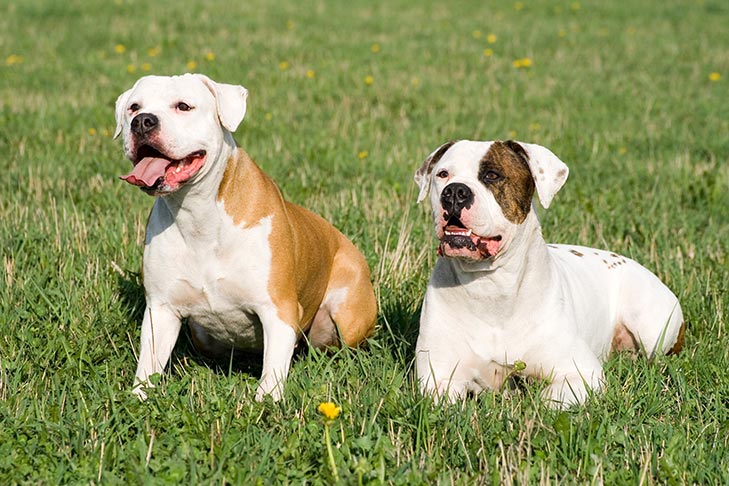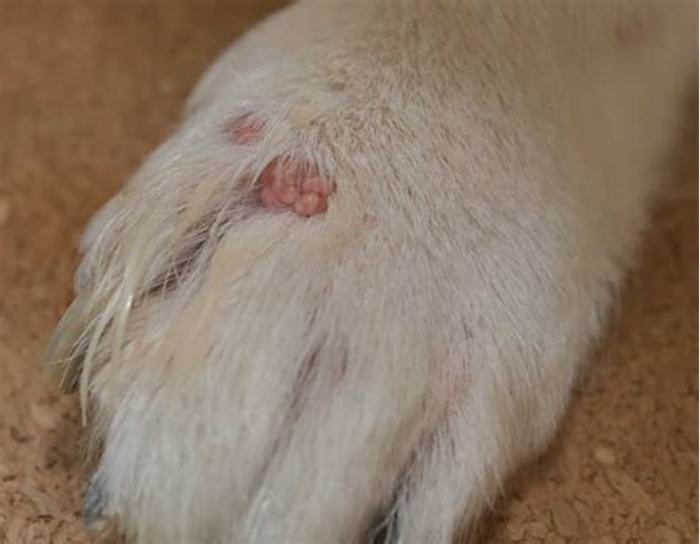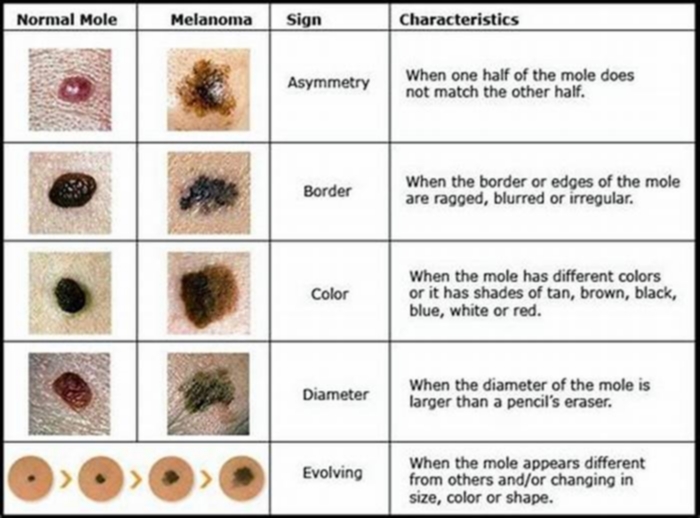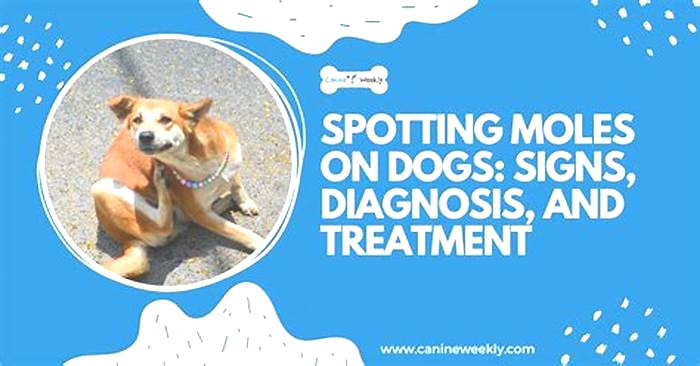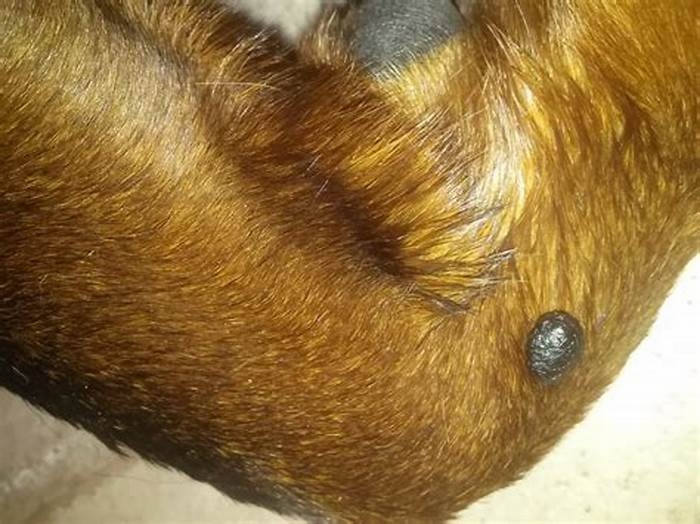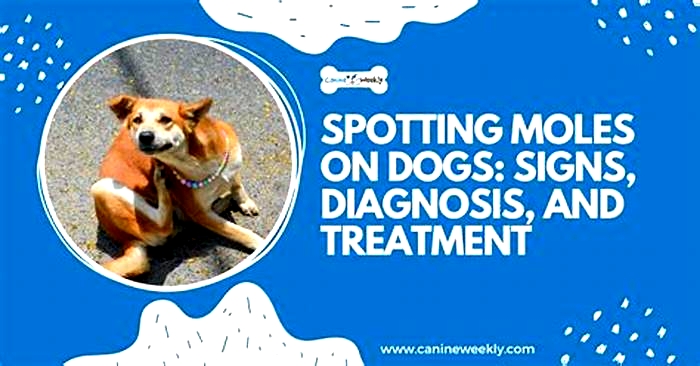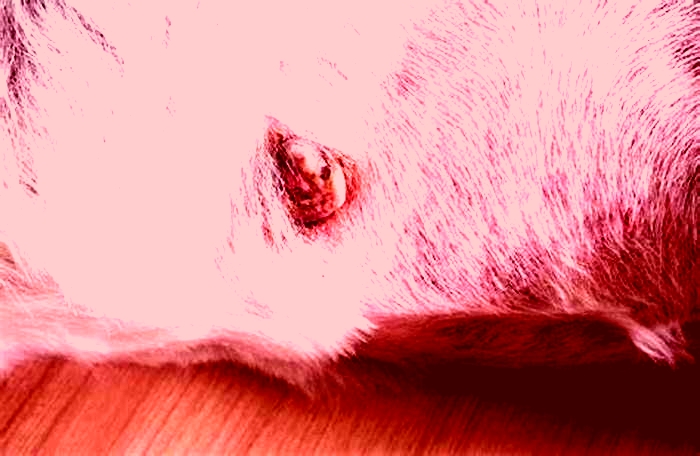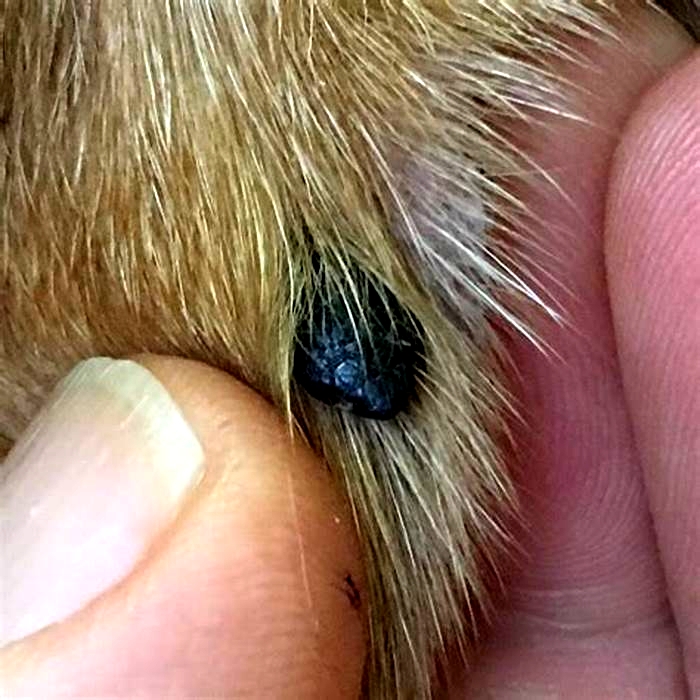What do cancerous moles on dogs look like
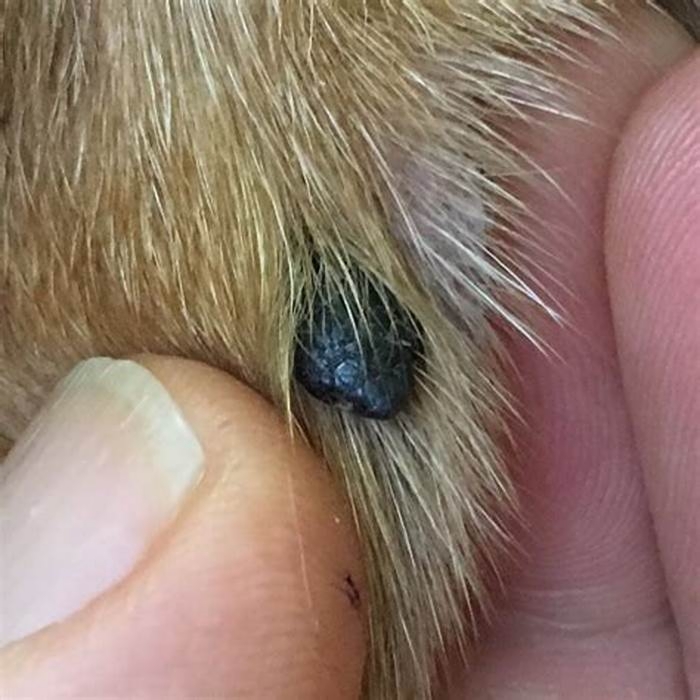
Cancerous Moles on Dogs
Cancerous moles may develop on the surface of the skin. Skin cancer is more common in senior dogs and dogs that have light colored coats. The moles may occur due to an uncontrollable development of cells. Not all moles are cancerous, but your dog should be checked by a specialist if he has any moles or abnormal skin growths.
Moles on Dogs
Moles on dogs may be benign or malignant and develop due to an abnormal division and multiplication of the cells. The division and multiplication of cells is controlled by the genes in the nucleus of cells. However, there may be some external factors that could influence the abnormal growth of skin cells.
Appearance of Canine Cancerous Moles
Moles are hard lumps and in dogs, they are typically dark in color. The moles may be present on any area of the dogs skin. Many dogs have moles, but not all of these are cancerous. Typically, moles that grow at a fast rate are cancerous. There are a few means that you could suspect the moles on your pet are cancerous:
- Cancerous moles are dark and grow on skin areas with hair (the color of the moles may change)
- The moles may have various sizes, but the edges are irregular
- Are raised and may bleed occasionally, as there are many blood vessels in the area
Benign moles may sometimes look like cancerous ones, so its always a good idea to have a veterinary checkup and have a clear diagnosis.
Types of Cancerous Moles on Dogs
There are several types of cancerous moles including:
- Melanoma, which is made up of malignant cells that typically develop in an older mole and affects certain breeds more often: Cocker Spaniels, Scottish Terrier and Boston Terriers.
- Sebaceous adenomas, which are lumps affecting the sebaceous glands. These moles are light in color and are smaller. Cocker Spaniels seem to be more often affected by this type of skin cancer
- Skin carcinomas have the appearance of cauliflower and are most frequently located on feet and legs
- Mast cell tumors, which often affect the legs or the abdominal area. This type of cancer is more common in Boxers
Diagnosing Cancerous Moles
A sample of cells is required to be biopsied to see if the mole is benign or malignant. The pathologist can establish the type of cancer and the stage of the cancer.
Other tests are needed if the cancer is suspected to be in a more advanced stage and it is present in neighboring lymph nodes or other organs.
Treatment Options for Cancerous Moles
Cancerous moles on dogs may be fully treated, but a timely detection is essential. Surgical excision is possible in the early stages of the disease and in some dogs, the moles will not be recurrent. If the cancer affects other organs, surgery is not an effective course of treatment and chemotherapy will be recommended.
Related Links:
Dog Skin Cancer: Types, Symptoms, and Treatment
The word cancer instills fear into the heart of every dog owner, but not all growths are cancerous. The most common growth found on dogs are lipomas, which are fat cells. Also commonly found on dogs are sebaceous cysts, which can become cancerous. If your veterinarian has diagnosed your dog with skin cancer, or if you are concerned that your dog might have a cancerous skin tumor or lump, it is understandable to feel worried and fearful.
Your veterinarian is your best resource to help you through any questions you may have about your dogs health and skin issues. However, here is some information you need to know about skin cancer in dogs to help you understand your dogs possible condition.
Can Dogs Get Skin Cancer?
Dogs can get skin cancer, just like we can. In fact, skin tumors are the most commonly diagnosed type of tumor in dogs. This is partly because skin tumors are easier to see with the naked eye than other types of tumors, and partly because the skin is exposed to more of the environmental factors that can cause tumors, such as chemicals, viruses, and solar radiation, then your dogs internal structures. Luckily, this also means that you and your veterinarian have a better chance of catching your dogs cancer before it progresses past available treatment options.
Causes of Skin Cancer in Dogs
Skin cancer can have a variety of causes. Just like with people, genetics play a large role in which dogs are more likely to get skin cancer. In fact, it is believed that genetics are the number one factor in the risk of a dog getting skin cancer. Triggers that may lead to a dog developing skin cancer include too much exposure to the sun, chemicals in the environment, hormonal abnormalities, and certain types of viruses.
Types of Skin Cancer in Dogs
There are several different types of skin cancer in dogs, just like there are several different layers of the skin. Each layer and skin component can develop distinct tumors, some of which may turn out to be cancerous.
Some of the more common types of skin cancer in dogs are:
- Malignant melanoma
- Mast cell tumors
- Squamous cell carcinoma
- Histiocytic cell tumors
- Fibrosarcoma
Malignant Melanoma
Melanomas can be either malignant or benign. These tumors are often dark-pigmented or can lack pigment. While benign melanomas are more common, malignant melanomas are a serious concern, as they grow quickly and have a high risk of metastasis (spreading to other organs).
Malignant melanomas are most commonly found on the lips, mouth, and nail beds. According to some researchers, the head, neck and scrotum areas are also moderately predisposed to skin cancer. Certain breeds, for example Miniature and Standard Schnauzers and Scottish Terriers, are at an increased risk, and males appear to be affected more than females.
Malignant melanomas look like raised lumps, often ulcerated, and can also look like gray or pink lumps in the mouth. Nail bed malignant melanomas, on the other hand, show up as toe swelling and possibly even loss of the toenail itself and destruction of underlying bone. Nail bed and footbed tumors often develop a secondary infection, leading to a misdiagnosis. These types of tumors usually metastasize to other parts of the body, decreasing the chances for a good outcome.
Mast Cell Tumors
Mast cell tumors are the most common types of skin cancer tumors. Mast cells release histamine, which is the chemical that causes some of the symptoms of allergic reactions in dogs, like irritation and itching. Mast cell tumors are cancer of these cells, and they can grow anywhere on your dogs skin, as well as in internal organs. The most common sites for mast cell tumors are the limbs, lower abdomen, and chest. About of mast cell tumors are found on dogs limbs.
Boxers, Pugs, Rhodesian Ridgebacks, Boston Terriers and older mixed breed dogs seem particularly susceptible to mast cell tumors, which most commonly affect dogs ages 8-to-10 years old. This cancer can be difficult to deal with, and your dog could have symptoms associated with toxins released from malignant mast cells, such as stomach ulcers, resulting from histamine release.
Squamous Cell Carcinoma
Skin squamous cell carcinoma is the most commonly diagnosed carcinoma of the skin, and primarily affects older dogs, especially Bloodhounds, Basset Hounds, and Standard Poodles. These tumors typically show up on the head, lower legs, rear, and abdomen, and appear as raised patches or lumps that are firm to the touch.
Exposure to the sun can be a cause of squamous cell carcinoma, but according to the National Canine Cancer Foundation, In dogs, the theory of exposure to sun is less obvious. It is believed that there may be some association with papilloma virus.
These tumors usually appear on your dogs abdomen, which is the area least protected from the sun by hair.


Histiocytic Cell Tumors
Histiocytic cells are a type of skin cell. When these cells proliferate into tumors, they are classified as histiocytic cell tumors.
These types of tumors are relatively common and typically affect dogs under 3 years old, especially Scottish Terriers, Bulldogs, Greyhounds, Boxers, Boston Terriers, and Chinese Shar-Pei.
There are three types of histiocytic cell tumors: histiocytomas, which are the most common; systemic histiocytosis, which mainly affects Bernese Mountain Dogs; and malignant histiocytosis, which also mainly affects Bernese Mountain Dogs and first shows up in the internal organs.
Fibrosarcoma
Fibrosarcoma and spindle cell tumors originate in the connective tissues of the skin and beneath the skin. These tumors can have a varied appearance, and while they are typically slow growing, they do tend to recur after surgical removal. Luckily, this type of tumor rarely metastasizes.
Fibrosarcoma usually affects dogs when they are middle-aged or older, with an average age of 10 years. Sometimes, an aggressive type of fibrosarcoma can affect young dogs. Your veterinarian will send off a sample of the tumor to a pathologist to determine whether or not the tumor is a low- or high-grade tumor, a classification that refers to the rate of cell division. This will help them give your dog an accurate prognosis and determine the best course of treatment.
This type of tumor is often found on the limbs. In addition to invading nearby structures, sometimes impeding their function, the tumors can also bleed, ulcerate, and become infected.
Symptoms of Skin Cancer in Dogs
The symptoms of skin cancer vary depending on the cancer, but in general, the best thing you can do to catch skin cancer early is to keep an eye on any strange lumps or bumps on your dogs body, especially as he ages.
Not all skin tumors are cancerous, and some, like skin tags, are usually benign sebaceous cysts or lipomas. However, if you discover an unusual lump or area of discoloration, play it safe and contact your veterinarian. Changes in the size, shape, color or ulceration of any growth or lump are also a cause for concern.
Diagnosing Skin Cancer in Dogs
Dog skin cancer is diagnosed by examining the cells of the skin tumor or lesion. Your veterinarian may perform a procedure called a fine needle aspiration, which takes a small sample of cells, or a biopsy, which removes a small portion of the tumor tissue or lesion by surgical incision. These samples are usually sent away to pathology for evaluation in order to obtain an accurate diagnosis.
Skin Cancer Treatment Options
A diagnosis of cancer for your dog is scary. Many types of skin cancer are treatable if caught early on, but it is understandable to feel worried.
Your dogs prognosis and treatment options will depend on a few factors, including the type of tumor, the location of the tumor, and the stage of the cancer.
Some skin tumors can be removed surgically to great effect. Others may require additional steps, such as radiation or chemotherapy.
Some types of cancer, for example malignant melanomas, are resistant to radiation therapy, while others, such as mast cell tumors, are more sensitive. Your veterinarian may refer you to a veterinarian oncologist when you have a cancer diagnosis. Veterinary oncologists have advanced training in cancer treatment.
Preventing Skin Cancer in Dogs
Some types of diseases are preventable, while others are not. As in humans, many cancers are the result of a genetic predisposition. In other cases, cancer is the result of a variety of factors coming together in an unlucky configuration, but there are a few things you can do to lower your dogs risk.
The risk factor most in your control is exposure to sunlight. If you have a light-skinned, short-haired dog breed, limiting your dogs exposure to direct sunlight, especially during the peak daylight hours, may help lower his risk of skin cancer.
The most important thing you can do to help your dog avoid skin cancer, however, is to familiarize yourself with all your dogs lumps, bumps, and rashes, perhaps during your daily grooming routine, and consult your veterinarian if you notice anything suspicious.
What Does a Mole Look Like?
A common mole (nevus) is a small growth on the skin that is usually pink, tan, or brown and has a distinct edge.
A dysplastic nevus is often large and does not have a round or oval shape or a distinct edge. It may have a mixture of pink, tan, or brown shades. People who have many dysplastic nevi have a greater chance than others of developing melanoma, a dangerous form of skin cancer. However, most dysplastic nevi do not turn into melanoma.
If the color, size, shape, or height of a mole changes or if it starts to itch, bleed, or ooze, people should tell their doctor. People should also tell their doctor if they see a new mole that doesn't look like their other moles.
The photos below show the difference between common moles and dysplastic nevi.
Photos of Moles
| Common Moles | Dysplastic Nevi |
|---|---|
Common moles that are evenly tan or brown | Dysplastic nevi that are a mixture of tan, brown, and red/pink |
A common mole that is round with a distinct edge | A dysplastic nevus with an irregular edge and the color fading into the skin around it |
Common moles that are smooth spots on the skin | Dysplastic nevi with scaly or pebbly surfaces |
A common mole is usually small. The first photo shows a common mole that is less than 5 millimeters (about 1/4 inch) wide. The second photo shows small moles on a person's back. |   Dysplastic nevi are often larger than 5 millimeters wide. The first photo shows a large dysplastic nevus. The second photo shows several large dysplastic nevi circled on a person's back. Dysplastic nevi are often larger than 5 millimeters wide. The first photo shows a large dysplastic nevus. The second photo shows several large dysplastic nevi circled on a person's back. |

